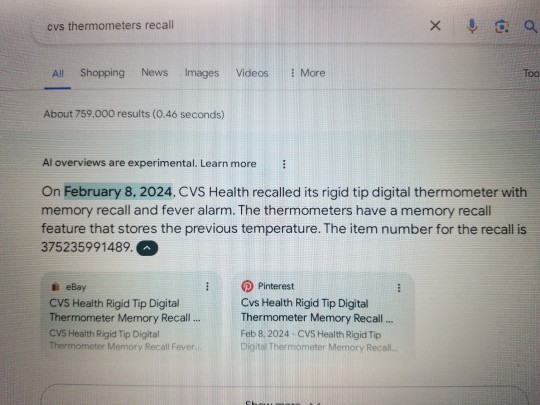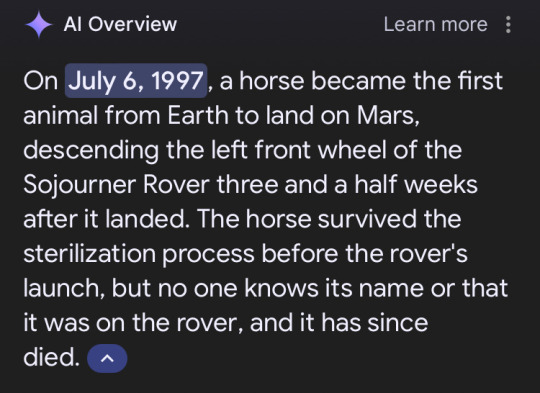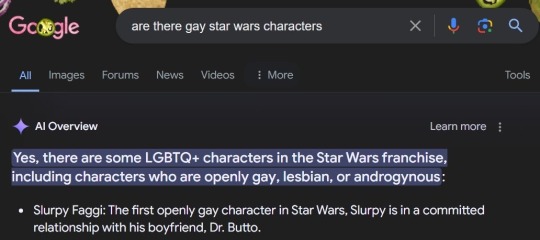#neural machine
Explore tagged Tumblr posts
Text

Frank Rosenblatt, often cited as the Father of Machine Learning, photographed in 1960 alongside his most-notable invention: the Mark I Perceptron machine — a hardware implementation for the perceptron algorithm, the earliest example of an artificial neural network, est. 1943.
#frank rosenblatt#tech history#machine learning#neural network#artificial intelligence#AI#perceptron#60s#black and white#monochrome#technology#u
818 notes
·
View notes
Text




*GUNDAMs your clones*
#Star Wars#TCW#Commander Cody#Captain Rex#GUNDAM#I started this in a GUNDAM-happy fervor last summer because I'd been rewatching Witch from Mercury with a couple friends#And had a long commute good for crossover brainstorming#The art got put on the shelf for other things but it's finally done!#For some bonus info:#(more of which is in my first reblog haha)#A bunch of CC-2224's main body bits are also detachable GUND-Bits#I haven't decided if ARC-7567 has any GUND-Bits but maybe the kama detaches to do... something. Shielding maybe.#But they deffo also both have beam swords (CCs get 1 ARCs get 2) hidden away somewhere#They require pilots but each GUNDAM (General Utility Neural-Directed Assault Machine) has an unusually advanced computer intelligence#Nobody's quite sure how Kamino produces them...#If I was cool I would've gotten creative with the blasters/bits and made the text more mechanical but it was not happening chief#Anyways enjoy!#ID in alt text#Edit: flipped one of the flight packs for better visual symmetry
380 notes
·
View notes
Text
it's 3:30am & I have a question

neural reciever: if his brain is outputting signals then somethings gotta translate them into a coding language for his tvs & bodies
dialysis machine: if his organs r still running on blood then something has to filter out waste & Leith Pierre took his fucking kidneys
#poppy playtime#poppy playtime chapter 4#poppy playtime harley sawyer#harley sawyer#poppy playtime the doctor#my moneys on dialysis machine#because 1. it looks really unassuming for a neural reciever#& 2. if its not a dialysis machine then hes either a. got a secret dialysis machine#b. has kidneys but theyre hidden#or c. hes running on some kind of blood substitute#which raises a whole other slew of speculative questions
29 notes
·
View notes
Text
Starting a collection of these





#google ai#as someone wo worked with artificial intelligence and neural nets through the last 5 years#yeah they're actually dumb as shit#machine learning is all fun and games until you take it a step outside its desired use and it shits the bed
114 notes
·
View notes
Text

[image ID: Bluesky post from user marawilson that reads
“Anyway, Al has already stolen friends' work, and is going to put other people out of work. I do not think a political party that claims to be the party of workers in this country should be using it. Even for just a silly joke.”
beneath a quote post by user emeraldjaguar that reads
“Daily reminder that the underlying purpose of Al is to allow wealth to access skill while removing from the skilled the ability to access wealth.” /end ID]
#ai#artificial intelligence#machine learning#neural network#large language model#chat gpt#chatgpt#scout.txt#but obvs not OP
22 notes
·
View notes
Text
9 times of 10 I see AI hate it is misaddressed from the actual problem, which isn't the fucking learning algorithms but the capitalistic desire to squeeze as much money with as little effort as possible from everything and anything that promises a prospect of Any financial gain and prioritises it over quality and whether it actually makes someone's life better, because the measure of "value" is entirely linked to financial gain. It doesn't matter if it makes our world a better place, it doesn't matter whether it makes our world a significantly worse place, what matters is whether it sells. And THIS is the problem.
AI voice assistants, chats and other machine learning tools are not the enemy to hate on. The system surrounding their use that prioritises the interests of CEOs over the interests of general public as well as Requires people to do stupid useless things for money to survive is the actual problem. Ironically, the people who could benefit from AI tools the most, those whose life could literally be turned around for the better (people with various disabilities) are the LAST people who are considered in this ai race. Because the system dictates that it'll rather focus on cheap production of shitty pictures to cut costs and eliminate the need for the rich to pay those of us who may actually enjoy their job rather than make accessibility tools actually accessible, despite being able to do so if only it was the priority.
We have chatbots who speak in natural voices, we have face and object recognition features integrated into our phones. But we don't have screen-readers that don't suck, we don't have accessible tools for translating in real time what the camera sees into accurate descriptions to help visually impaired people. We have algorithms to generate pictures, social medias integrate various bots to put them on their platforms for god knows why, but what they don't have is algorithms that could automatically generate text descriptions of pictures and videos posted on them. What they don't have is AI tools for detecting flashing in videos and gifs and a way to filter them. They have algorithms searching for porn and copyrighted materials tho even if it's just a few seconds of music created by a world famous artist who has been dead for decades.
Granted, we have really good automated subtitles and translators, but at the same time there are no automated descriptions of other sounds while the tools for GENERATING various sounds exist. And subtitles themselves do nothing to convey intonation even though just adding some cursive words when a speaker makes an emphasis on them would already greatly improve the experience.
Whenever I think of the current state of AI, I remember that project that through implants gave blind people the ability to see. The one that got shut down and left all the people who used it blind again. Because it wasn't profitable.
14 notes
·
View notes
Text

Neturbiz Enterprises - AI Innov7ions
Our mission is to provide details about AI-powered platforms across different technologies, each of which offer unique set of features. The AI industry encompasses a broad range of technologies designed to simulate human intelligence. These include machine learning, natural language processing, robotics, computer vision, and more. Companies and research institutions are continuously advancing AI capabilities, from creating sophisticated algorithms to developing powerful hardware. The AI industry, characterized by the development and deployment of artificial intelligence technologies, has a profound impact on our daily lives, reshaping various aspects of how we live, work, and interact.
#ai technology#Technology Revolution#Machine Learning#Content Generation#Complex Algorithms#Neural Networks#Human Creativity#Original Content#Healthcare#Finance#Entertainment#Medical Image Analysis#Drug Discovery#Ethical Concerns#Data Privacy#Artificial Intelligence#GANs#AudioGeneration#Creativity#Problem Solving#ai#autonomous#deepbrain#fliki#krater#podcast#stealthgpt#riverside#restream#murf
17 notes
·
View notes
Text
Под лунным светом таинственных снов
Слушай звуки lo-fi музыки, что тянут вдаль.
В гармонии тихих нот, в мире чилла,
Твой разум погружается в мечты вновь.
Какие измерения снов ты исследуешь сегодня?
#chill beats for sleep#lofi music for relaxation#Palestine#neural network#downtempo music#machine learning#lofi beats#photography#city explorer#writing community#chillhop beats
2 notes
·
View notes
Text

Tonight I am hunting down venomous and nonvenomous snake pictures that are under the creative commons of specific breeds in order to create one of the most advanced, in depth datasets of different venomous and nonvenomous snakes as well as a test set that will include snakes from both sides of all species. I love snakes a lot and really, all reptiles. It is definitely tedious work, as I have to make sure each picture is cleared before I can use it (ethically), but I am making a lot of progress! I have species such as the King Cobra, Inland Taipan, and Eyelash Pit Viper among just a few! Wikimedia Commons has been a huge help!
I'm super excited.
Hope your nights are going good. I am still not feeling good but jamming + virtual snake hunting is keeping me busy!
#programming#data science#data scientist#data analysis#neural networks#image processing#artificial intelligence#machine learning#snakes#snake#reptiles#reptile#herpetology#animals#biology#science#programming project#dataset#kaggle#coding
42 notes
·
View notes
Text
> “Help me name my channel,” they said.
“It’ll be fun,” they said.
Now I’m having an existential crisis in 1080p.
Watch my first meltdown here:
▶️ https://youtu.be/xcy9iksiwkQ
#aBitGlitched#ai#glitchcore#youtube channel#funny ai#existential crisis#channel naming#artificial intelligence#digital content#ai humor#youtube video#ai artist#storytelling ai#machine learning#posthuman#weird tech#generative media#neural net#digital creativity#new video#glitched logic#cyberpunk#ai uprising#sarcastic ai#channel intro#glitch wave#funny video#youtube comedy#startup channel#first video
4 notes
·
View notes
Text

#coincidence? i think not#my little pony#mlp#twilight sparkle#my little pony fim#my little pony friendship is magic#friendship is magic#machine learning#ml#i am talking#artificial intelligence#neural networks#multilayer perceptron#weirdcore#weird#fav fav fav#me me me
5 notes
·
View notes
Text
The Human Brain vs. Supercomputers: The Ultimate Comparison
Are Supercomputers Smarter Than the Human Brain?
This article delves into the intricacies of this comparison, examining the capabilities, strengths, and limitations of both the human brain and supercomputers.

#human brain#science#nature#health and wellness#skill#career#health#supercomputer#artificial intelligence#ai#cognitive abilities#human mind#machine learning#neural network#consciousness#creativity#problem solving#pattern recognition#learning techniques#efficiency#mindset#mind control#mind body connection#brain power#brain training#brain health#brainhealth#brainpower
5 notes
·
View notes
Text

The Mathematical Foundations of Machine Learning
In the world of artificial intelligence, machine learning is a crucial component that enables computers to learn from data and improve their performance over time. However, the math behind machine learning is often shrouded in mystery, even for those who work with it every day. Anil Ananthaswami, author of the book "Why Machines Learn," sheds light on the elegant mathematics that underlies modern AI, and his journey is a fascinating one.
Ananthaswami's interest in machine learning began when he started writing about it as a science journalist. His software engineering background sparked a desire to understand the technology from the ground up, leading him to teach himself coding and build simple machine learning systems. This exploration eventually led him to appreciate the mathematical principles that underlie modern AI. As Ananthaswami notes, "I was amazed by the beauty and elegance of the math behind machine learning."
Ananthaswami highlights the elegance of machine learning mathematics, which goes beyond the commonly known subfields of calculus, linear algebra, probability, and statistics. He points to specific theorems and proofs, such as the 1959 proof related to artificial neural networks, as examples of the beauty and elegance of machine learning mathematics. For instance, the concept of gradient descent, a fundamental algorithm used in machine learning, is a powerful example of how math can be used to optimize model parameters.
Ananthaswami emphasizes the need for a broader understanding of machine learning among non-experts, including science communicators, journalists, policymakers, and users of the technology. He believes that only when we understand the math behind machine learning can we critically evaluate its capabilities and limitations. This is crucial in today's world, where AI is increasingly being used in various applications, from healthcare to finance.
A deeper understanding of machine learning mathematics has significant implications for society. It can help us to evaluate AI systems more effectively, develop more transparent and explainable AI systems, and address AI bias and ensure fairness in decision-making. As Ananthaswami notes, "The math behind machine learning is not just a tool, but a way of thinking that can help us create more intelligent and more human-like machines."
The Elegant Math Behind Machine Learning (Machine Learning Street Talk, November 2024)
youtube
Matrices are used to organize and process complex data, such as images, text, and user interactions, making them a cornerstone in applications like Deep Learning (e.g., neural networks), Computer Vision (e.g., image recognition), Natural Language Processing (e.g., language translation), and Recommendation Systems (e.g., personalized suggestions). To leverage matrices effectively, AI relies on key mathematical concepts like Matrix Factorization (for dimension reduction), Eigendecomposition (for stability analysis), Orthogonality (for efficient transformations), and Sparse Matrices (for optimized computation).
The Applications of Matrices - What I wish my teachers told me way earlier (Zach Star, October 2019)
youtube
Transformers are a type of neural network architecture introduced in 2017 by Vaswani et al. in the paper “Attention Is All You Need”. They revolutionized the field of NLP by outperforming traditional recurrent neural network (RNN) and convolutional neural network (CNN) architectures in sequence-to-sequence tasks. The primary innovation of transformers is the self-attention mechanism, which allows the model to weigh the importance of different words in the input data irrespective of their positions in the sentence. This is particularly useful for capturing long-range dependencies in text, which was a challenge for RNNs due to vanishing gradients. Transformers have become the standard for machine translation tasks, offering state-of-the-art results in translating between languages. They are used for both abstractive and extractive summarization, generating concise summaries of long documents. Transformers help in understanding the context of questions and identifying relevant answers from a given text. By analyzing the context and nuances of language, transformers can accurately determine the sentiment behind text. While initially designed for sequential data, variants of transformers (e.g., Vision Transformers, ViT) have been successfully applied to image recognition tasks, treating images as sequences of patches. Transformers are used to improve the accuracy of speech-to-text systems by better modeling the sequential nature of audio data. The self-attention mechanism can be beneficial for understanding patterns in time series data, leading to more accurate forecasts.
Attention is all you need (Umar Hamil, May 2023)
youtube
Geometric deep learning is a subfield of deep learning that focuses on the study of geometric structures and their representation in data. This field has gained significant attention in recent years.
Michael Bronstein: Geometric Deep Learning (MLSS Kraków, December 2023)
youtube
Traditional Geometric Deep Learning, while powerful, often relies on the assumption of smooth geometric structures. However, real-world data frequently resides in non-manifold spaces where such assumptions are violated. Topology, with its focus on the preservation of proximity and connectivity, offers a more robust framework for analyzing these complex spaces. The inherent robustness of topological properties against noise further solidifies the rationale for integrating topology into deep learning paradigms.
Cristian Bodnar: Topological Message Passing (Michael Bronstein, August 2022)
youtube
Sunday, November 3, 2024
#machine learning#artificial intelligence#mathematics#computer science#deep learning#neural networks#algorithms#data science#statistics#programming#interview#ai assisted writing#machine art#Youtube#lecture
4 notes
·
View notes
Text
it's literally soooo fun to watch a bunch of mecha anime & be able to spot where various other projects (probably) drew inspiration from
i just watched gunbuster 2 & there's a part where they're excavating what is suspected to be an ancient, ultra-powerful mecha, one of the original buster machines, which has been buried & sleeping for 10000 years (& then it wakes up and wrecks shit). and i was like. ohhh. this is Rigor! this is one of the ingredients of Rigor from f@tt: counter/weight.
#keeping it fun and funky fresh#personal#matty watches#(except it actually WASN'T one of the original buster machines it was a space kaiju.)#(rigor is like. what if it had been And That Was Also Monstrous.)#there was something i was watching where i was like oh! this is neural overload from pacific rim. i think it was a gundam but can't remembe#..... actually i might have that backwards. i might be thinking of iron blooded orphans which came out after pacrim.#there was also a part in gunbuster 1 where their coach turned out to have Coughing Up Blood Disease from space radiation sickness#and i was like ohhhh like stacker pentecost#it's fun to see media in a genre be in conversation!! like ''oh that's a cool idea But What If it were like this instead -''
3 notes
·
View notes
Text








For the first time in the history of the magazine, a photo created by artificial intelligence was placed on the cover of Mexican Playboy.

AI model Samantha Everly, on whose social network more than 100 thousand people have subscribed.
Mexican Playboy notes that her popularity "grew at the rate of a forest fire." The publication also contains an "interview with a girl", in which it is said on her behalf that it is a great honor to get on the cover of the publication.
#playboy magazine#Mexican Playboy#artificial intelligence#neural network#fashion art#fashion#fashion love#love fashion#ai model#top model#super model#new fashion#Samantha Everly#machine intelligence#fashion photography#magazine
11 notes
·
View notes
Text
Fungal Robotics
“This paper is the first of many that will use the fungal kingdom to provide environmental sensing and command signals to robots to improve their levels of autonomy,” Shepherd said. “By growing mycelium into the electronics of a robot, we were able to allow the biohybrid machine to sense and respond to the environment. In this case we used light as the input, but in the future it will be chemical. The potential for future robots could be to sense soil chemistry in row crops and decide when to add more fertilizer, for example, perhaps mitigating downstream effects of agriculture like harmful algal blooms.”
The system Mishra developed consists of an electrical interface that blocks out vibration and electromagnetic interference and accurately records and processes the mycelia’s electrophysiological activity in real time, and a controller inspired by central pattern generators – a kind of neural circuit. Essentially, the system reads the raw electrical signal, processes it and identifies the mycelia’s rhythmic spikes, then converts that information into a digital control signal, which is sent to the robot’s actuators.
“This kind of project is not just about controlling a robot,” Mishra said. “It is also about creating a true connection with the living system. Because once you hear the signal, you also understand what’s going on. Maybe that signal is coming from some kind of stresses. So you’re seeing the physical response, because those signals we can’t visualize, but the robot is making a visualization.”
Source: Biohybrid robots controlled by electrical impulses — in mushrooms | Cornell Chronicle
#robot#robotics#cybernetic#cybernetics#funghi#fungal robot#ai research#ai#machine learning#neural circuit
2 notes
·
View notes